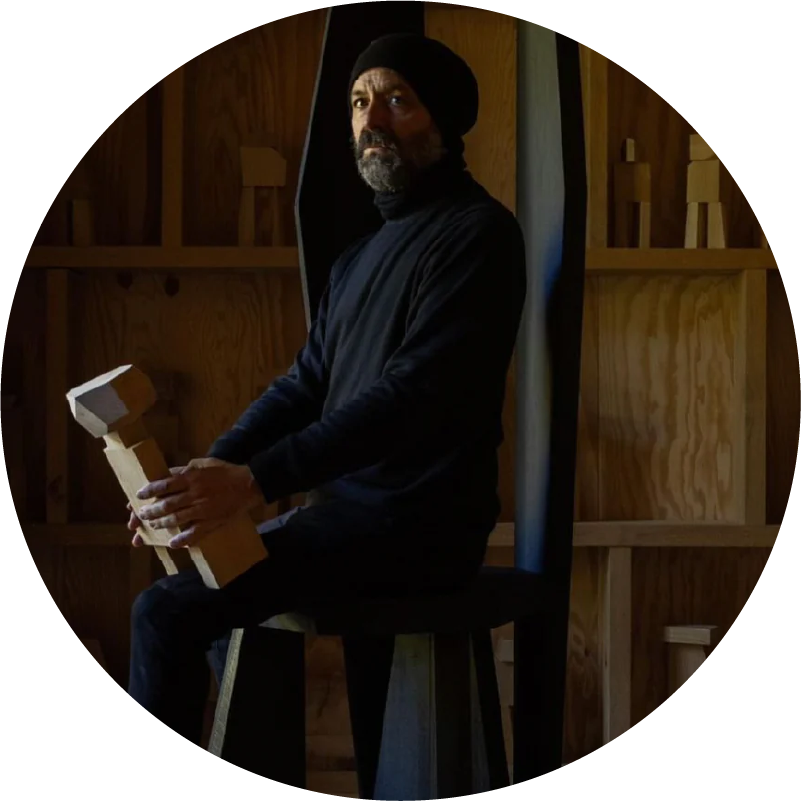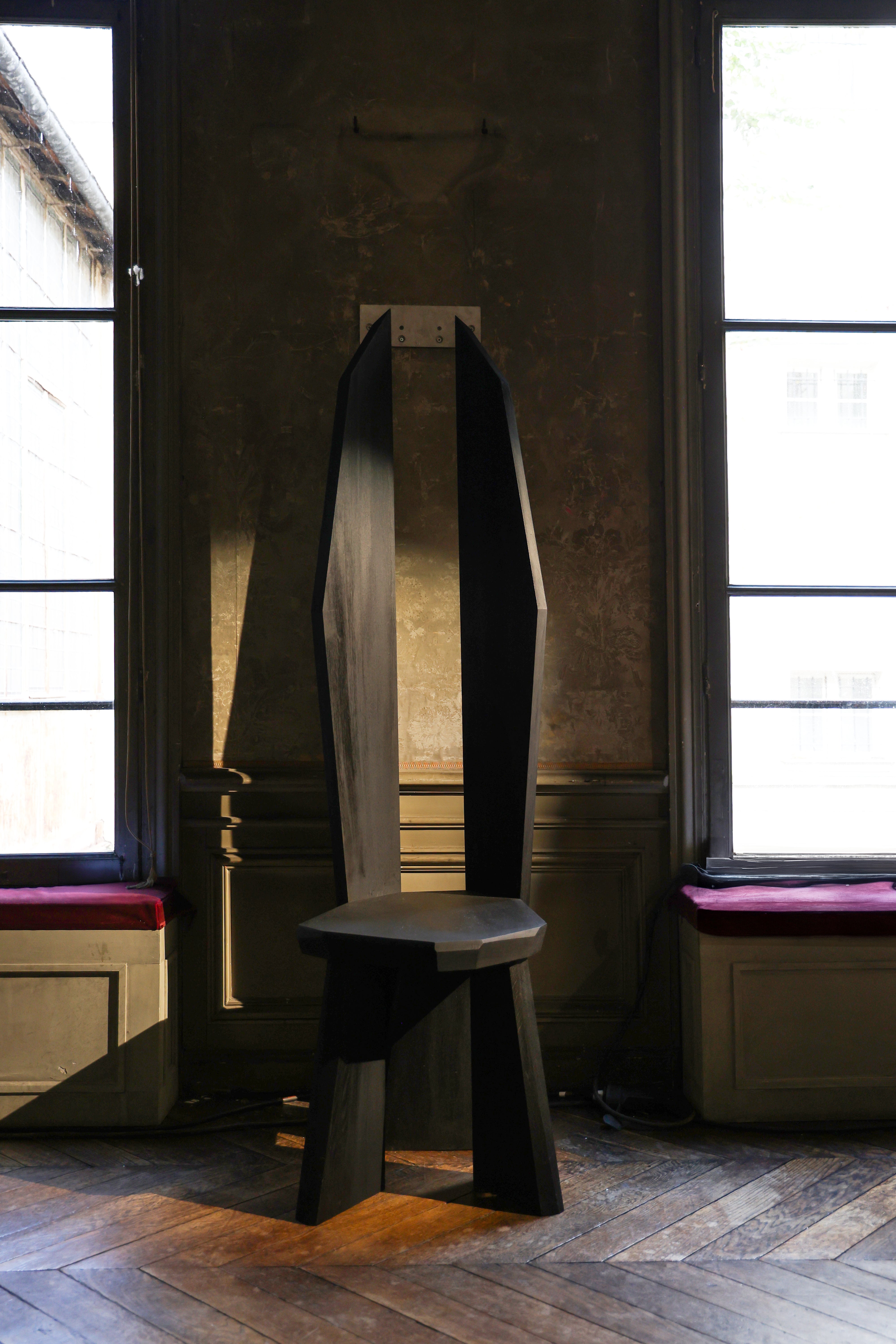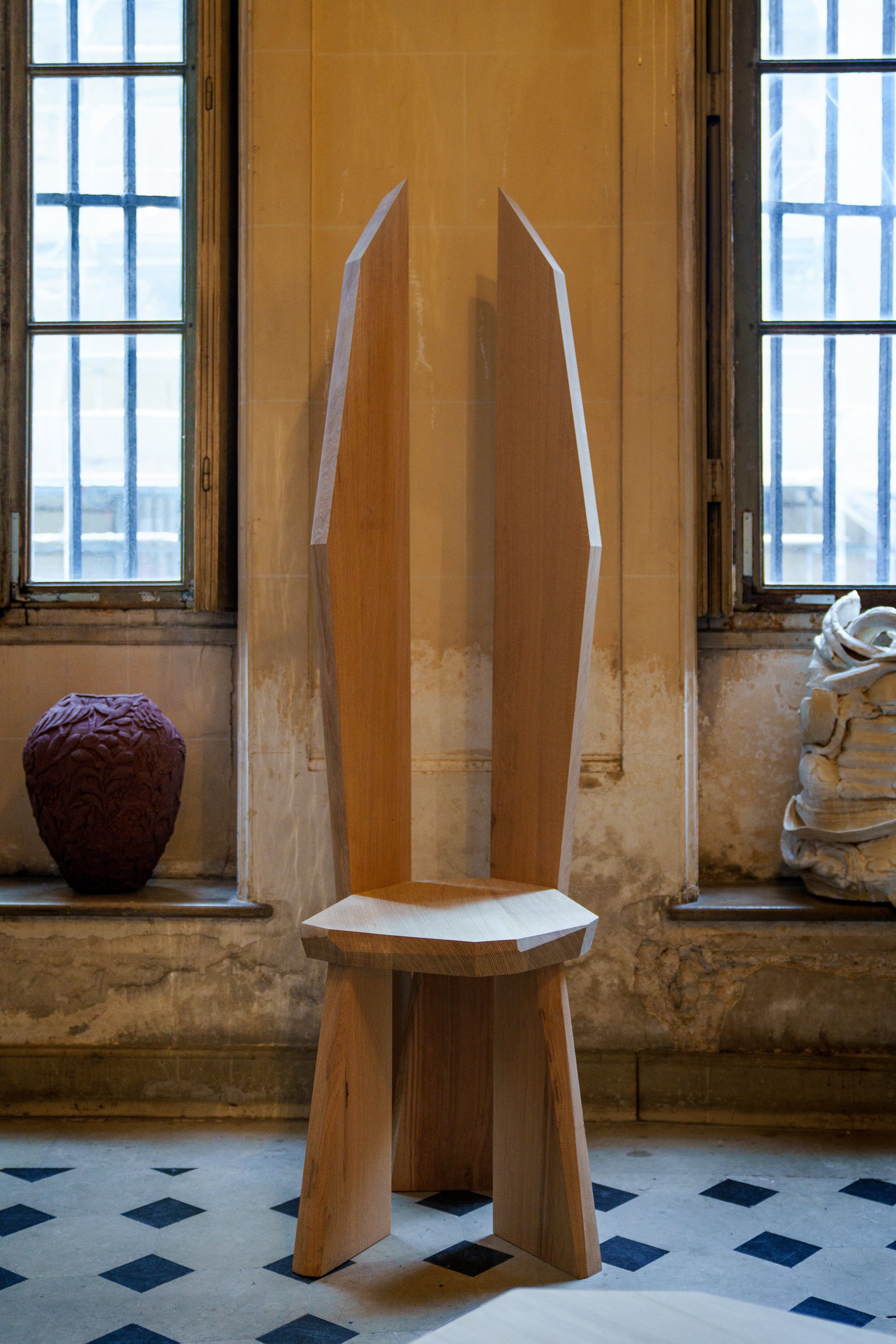
JEAN GUILLAUME-MATHIAUT
Transforming forests into "landscape furniture" through drawings, sculptures, and designs, Jean Guillaume-Mathiaut is a multifaceted artist whose inspiration stems from nature. It is no coincidence that he settled in the village of Bourron-Marlotte, nestled in the heart of the Fontainebleau Forest—he was born there. "My mother gave birth to me on the edge of this forest." This profound connection with nature, forged in childhood, has greatly influenced his creative journey. Driven by an inexhaustible creative energy, Mathiaut won prestigious architecture competitions as early as the age of 23, including the Van Alen Institute contest, with his design for a stilt house seamlessly integrated into the Long Island environment.
Gifted in drawing, he began his career assisting two contemporary artists before expanding his expertise by collaborating with renowned architects, including Édouard François and Jean Nouvel, from 1995 to 2000. His meeting with Patrick Blanc, the botanist and inventor of vertical gardens, left a lasting impression. His commitment to nature became unwavering. "It was a decisive encounter. He taught me to integrate plants into architecture and, above all, to be free."
On several occasions, Mathiaut traveled to the Dogon region in Africa to learn vernacular construction techniques. He later became an assistant to Jean-Luc Choplin, a prominent figure in the theatrical world and then artistic director of Galeries Lafayette. Mathiaut held this position for a year before succeeding Choplin, who moved to the Théâtre du Châtelet.
In 2005, Mathiaut embarked on a new path as a designer and interior architect for major Japanese designers such as Issey Miyake, Yohji Yamamoto, and Rei Kawakubo. This opportunity allowed him to bring his own universe to life, blending sculpture with the essence of the forest. He creates his works from fallen, weathered, or fossilized tree trunks: his pieces are an allegory of the forest and a tribute to biodiversity. "I have a shamanic relationship with this environment, which healed me after an accident and gave me the strength to rise again. These trees give back a hundredfold what you offer them. Seeing them awaken every morning is a rejuvenating experience that nourishes my artistic practice."
Inspired by African practices, Japanese assembly techniques, and his travel memories, his "furniture tribes" pay homage to major architectural movements—Bauhaus and Brutalism—as well as to Brancusi, whose humility, formal freedom, and timelessness he admires. His work transcends the boundaries between architecture, design, and art, offering viewers a fresh perspective on the beauty of our natural environment. Through his creations, he strives to achieve precision and simplicity of form, staying as close to nature as possible.
1 prodotto

